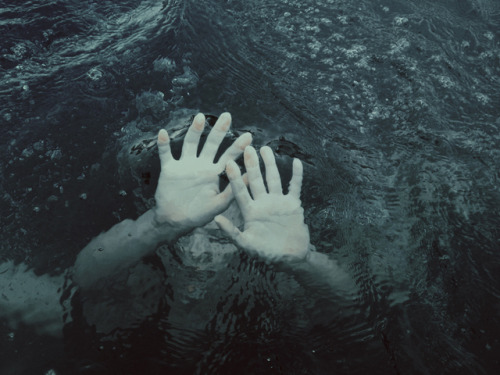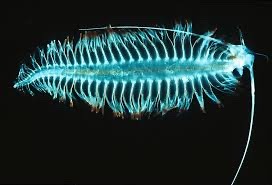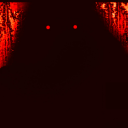Infinityflesh00 - Ergoprox00


More Posts from Infinityflesh00 and Others

Vessel sound is temporarily causing hearing loss in squids
Globally, anthropogenic sounds have become louder and more persistent, however, little is known about how invertebrates detect and respond to human-made sound. Now, new research shown noise associated with boats causes causes temporal hearing loss in squids across different stages of their life cycle.
The hummingbird bobtail squid (Euprymna berryi) has a short lifespan of at least 6 months, which make them a convenient animal for lab studies. Hearing and behavioural observations were made by researchers before, during and after 15 minutes of vessel sound playback, to test how these squids react to noise pollution, and noted that these squids decrease their hearing sensitivity after exposure to noise, and particularly noise affected juveniles. Juvenile squids experienced an important hearing loss sensitivity after noise exposure between 400 and 800 Hz, while adult and mature squids decreased their sensibility after 200 to 600 Hz exposure, showing more resistence. All squids recovered auditory sensitivity within two hours.
Researchers aim the inclusion of cephalopods within management and policy, because anthropogenic activities and associated sound levels in the ocean are increasing, while the role sound plays in cephalopod life history is only just beginning to be understood.
Photo by Pascal Girard
Reference () Putland et al. 2023. Vessel sound causes hearing loss for hummingbird bobtail squid (Euprymna berryi). Frontiers in Marine Science
Barrel eyes, they’re watching you! 👀
The barreleye fish, Macropinna microstoma, has extremely light-sensitive eyes that can rotate within a transparent, fluid-filled shield on its head. The fish’s tubular eyes are capped by bright green lenses. Here, the eyes are pointed upward in search of food. The two spots above the barreleye’s mouth—where we might expect to see eyes on a fish—are actually olfactory organs called nares, which are similar to human nostrils. Learn more about this extraordinary animal of the deep.


🥶 ~ Freeze Blue ~ 🥶 (blacklabelbarllc)
(Credit if you use please) (ko-fi)

Help by Hamza Kulenovic
Did you guys know that the most recent version of sharks have fins that are kinda leg like and they like to walk up onto land?








My frozen land
Tomopterids, the ethereal glow worms of the deep 💡🐛







Tomopterids are marine planktonic polychaetes—commonly known as Gossamer Worms — that swim in the water column, never touching the seafloor. Growing anywhere between 1 cm and 30 cm long. They are also one of the very few marine creatures that can produce yellow light, spewing their bioluminescence to scare off predators
Love to sea it 🌊
Daily fish fact #497
Tripod fish!

Their name comes from their tendency to rest completely still on their elongated fins, giving them the appearance of a tripod! When they’re still, their fins appear stiff, but interestingly, when the fish are actually swimming they seem flexible; this had lead to some theories that the fish may pump their fins full of fluids to make them stiff but they’re otherwise quite bendy.

Great white sharks' sharp, sturdy teeth can rip into flesh and even break bones of large prey.

Two lemon sharks hang out near the Bahama Islands.

A diver follows a whale shark in the Indian Ocean.


Left: To humans, the chain catshark seems to have brownish-yellow skin with black chain-shaped markings. Right: To capture this image, scientists built a camera that sees the world like this shark does.

A great white shark swims in waters off of Australia’s Neptune islands.

A Greenland shark swims below the Arctic Ocean ice, off the coast of Canada.

A bonnethead shark explores the waters off the Florida Keys.

A spinner shark prepares to fly through a school of fish.

Sharks, such as this shortfin mako, have special reflective cells in their eyes that give them clear night vision. So it's no wonder that sharks typically hunt at dusk or after dark.




“Impossible Figures” Minimalist Posters by Éric Le Tutour
An Impossible Figure is an optical illusion in which a physically impossible three-dimensional object is depicted in two-dimensions. Humans have a natural tendency to try to interpret drawings as three-dimensional objects, which is why when viewing an impossible figure, you may feel confused or find the image unsettling!
Reutersvärd’s Triangle and the Penrose Triangle were first created by graphic artist Oscar Reutersvärd, the Impossible Cube (the kind of Necker Cube portrayed on the poster) was invented by M.C. Escher for his artwork Belvedere, and the Penrose Stairs were created by psychologist Lionel Penrose and his mathematician son, Roger Penrose. (The Penrose pair also created the Penrose Triangle independently from and later than Reutersvärd.) These inventors clearly show that “impossible objects are of interest to psychologists, mathematicians and artists without falling entirely into any one discipline”. Source.
More pictures of these awesome minimalist posters can be found here. Find more work by Eric Le Tutour at his site www.ericletutour.fr/!
